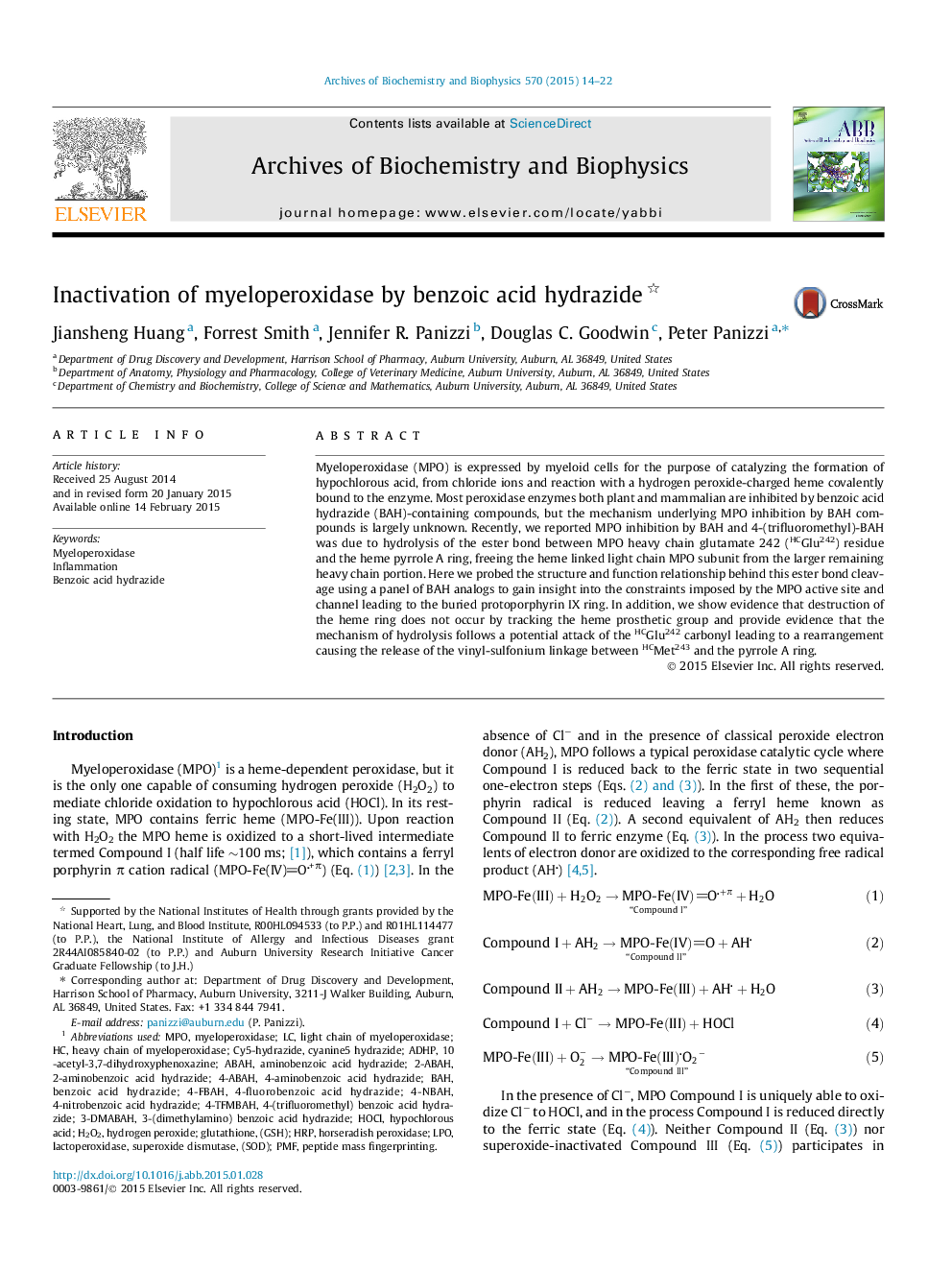| Article ID | Journal | Published Year | Pages | File Type |
|---|---|---|---|---|
| 1925049 | Archives of Biochemistry and Biophysics | 2015 | 9 Pages |
•Myeloperoxidase (MPO) inactivation by benzoic acid hydrazide (BAH) does not destroy the heme b.•BAH analogs show maximal generation of (heme b)-light chain at neutral electron potential.•Cy5-hydrazide inactivates MPO labeling the heavy chain after freeing linkages with heme b.•Three MPO residues (HCLys138, HCLys308, and HCLys463) were modified by benzoic acid radicals.•Oxidation of methionine residues (HCMet243 and HCMet249) follows BAH inactivation.
Myeloperoxidase (MPO) is expressed by myeloid cells for the purpose of catalyzing the formation of hypochlorous acid, from chloride ions and reaction with a hydrogen peroxide-charged heme covalently bound to the enzyme. Most peroxidase enzymes both plant and mammalian are inhibited by benzoic acid hydrazide (BAH)-containing compounds, but the mechanism underlying MPO inhibition by BAH compounds is largely unknown. Recently, we reported MPO inhibition by BAH and 4-(trifluoromethyl)-BAH was due to hydrolysis of the ester bond between MPO heavy chain glutamate 242 (HCGlu242) residue and the heme pyrrole A ring, freeing the heme linked light chain MPO subunit from the larger remaining heavy chain portion. Here we probed the structure and function relationship behind this ester bond cleavage using a panel of BAH analogs to gain insight into the constraints imposed by the MPO active site and channel leading to the buried protoporphyrin IX ring. In addition, we show evidence that destruction of the heme ring does not occur by tracking the heme prosthetic group and provide evidence that the mechanism of hydrolysis follows a potential attack of the HCGlu242 carbonyl leading to a rearrangement causing the release of the vinyl-sulfonium linkage between HCMet243 and the pyrrole A ring.
Graphical abstractFigure optionsDownload full-size imageDownload high-quality image (63 K)Download as PowerPoint slide
